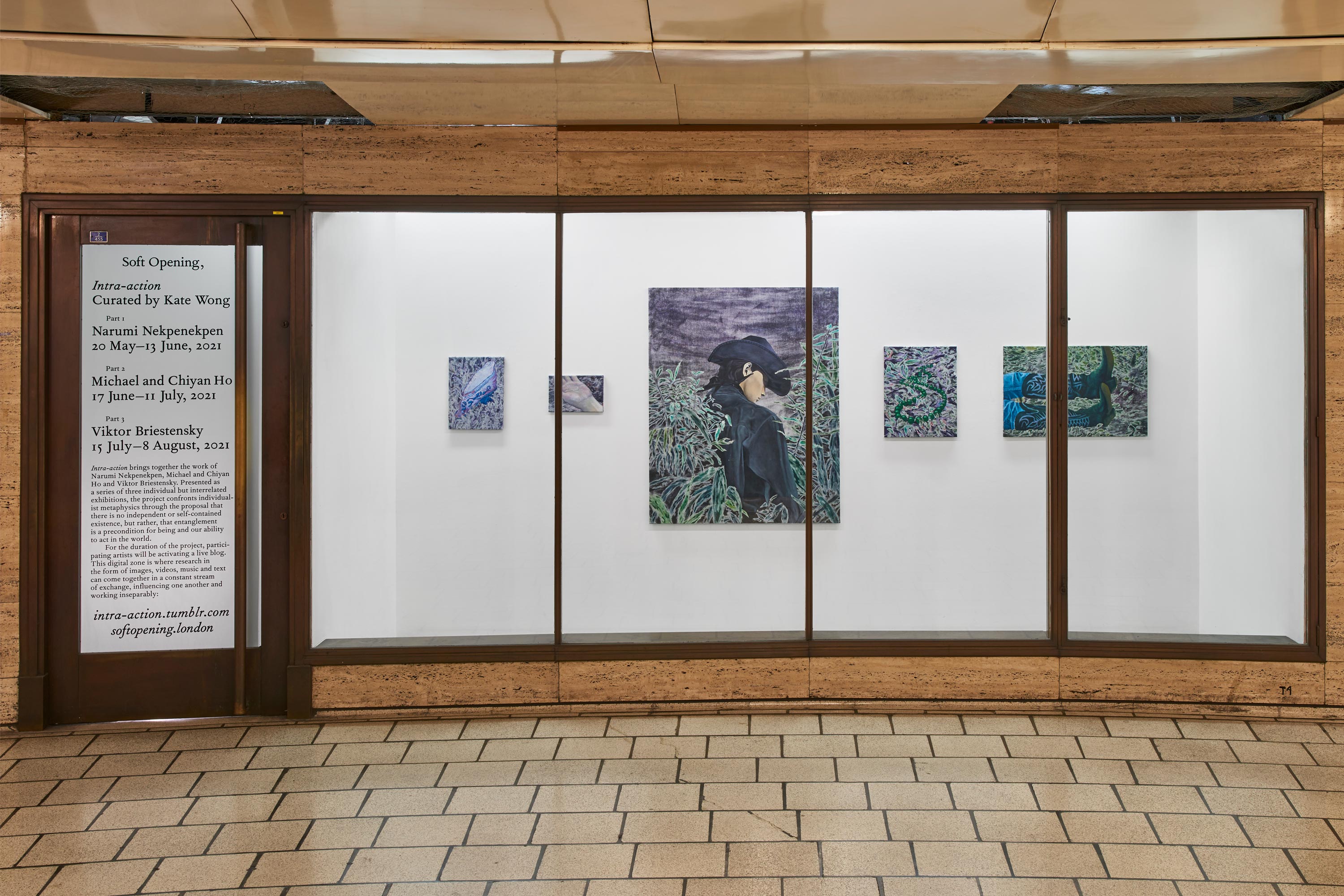A dark-haired, pale-skinned cowboy stands beneath a gauzy sky. With his back to the viewer and nestled between slivers of foliage, his eyes are downcast, obscured by the brim of his large, black cowboy hat.
Bruce Wang moved to Texas from China’s Yunnan Province to attend university. Quickly adopting a Southern drawl, learning to ride horses and wrangle cattle, Bruce describes his interest in the cowboy way of life as a means to work against stereotypes of East Asians as meek and studious; as a way to be legible to the Southern American community he found himself in.
Responding to Bruce’s experience, Michael and Chiyan Ho’s paintings in Intra-action: Part 2 butt Eastern and Western iconography against one another as a means to think through the complex questions surrounding otherness, assimilation and belonging. As second generation Chinese immigrants living in the UK, the duo’s collaborative approach to making emerges from the desire to locate a dialectical space in which to think through their individual and shared experiences living within a predominantly white society. Both trained as architects, their practice is research-driven and traverses different mediums as a way to explore aspects of identity and issues of race. Michael and Chiyan Ho’s collaborations shift focus away from the individual, revealing what can emerge from working interdependently.
When approaching a new painting, the duo always begin at the back of the canvas. From this generally hidden and disregarded position, paint is pushed through the fibres of the cloth, allowing it to seep to the front in hazy patches. Though deliberate, this unusual process of underpainting surrenders itself to the materials involved. Unbound from conventional techniques, Michael and Chiyan Ho allow their joint interactions with canvas and paint to lead to new understandings about themselves and their relationship to the world.
Tapping into the language of magical realism, three of the five paintings in Intra-action: Part 2 portray the body of a cowboy, divided. One work portrays his outstretched hand holding a curious transparent liquid, the second, his head and torso, and the third, a pair of legs clad in blue jeans and cowboy boots, in stillness on the forest floor. Considered anachronistically alongside an embroidered silk Qing dynasty boot and a string of glistening green jade beads, Michael and Chiyan Ho’s presentation elicits a distinct feeling of the uncanny: time and place are unsettled as a way to think through temporal and cultural incongruencies. Making reference to Hong Kong’s liminal New Territories, a densely forested area that shares a border with mainland China and that has experienced both British and Chinese rule, the paintings are rooted in spatial and cultural disjuncture. The duo prompt us to ask: what happens to the precarious body when it is placed in a transitional space? And what can be gained by accessing the magical or supernatural within that space?
Placing Chinese diasporic experience at the heart of their practice, Michael and Chiyan Ho’s paintings can be understood as a form of cultural articulation, and re-articulation. Always in the presence of one another’s ideas and criticisms, the essence of their methodology sits within a process of self-reflexive discourse.

